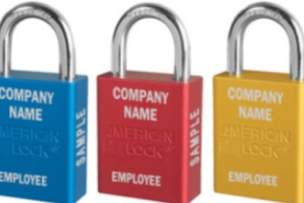Regular training can help teach your employees how to recognize and prevent symptoms of heat stress.
A heat stress training program can keep workers safe in hot working conditions, whether under a scorching summer sun or in a facility with radiant heat sources.
Manufacturing workers probably know why hydration is important in the hot summer months. But do they know how often they should drink water to stay hydrated? Do they recognize the signs of heat stress—heat exhaustion, heat stroke and more—in themselves or others? And if they do, do they know what actions to take? If you have workers exposed to high temperatures, either indoors or out, these are all questions you should address in a training program.
Heat stress can have serious consequences.
Extreme heat was the third-highest weather-related cause of death in 2019 with 63 fatalities, according to the latest statistical information from the National Weather Service.
The agency’s data also show that, on average, extreme heat is the deadliest type of weather in the U.S., killing 138 people each year, according to the 30-year average from 1990 to 2019.
Heat stroke can cause acute heart, liver, kidney and muscle damage, as well as issues with the nervous system. Left untreated, it can also kill. Heat stress can also lead to more accidents on the worksite, as workers suffering from heat exhaustion may be less alert and more confused.
Even heat rashes can be serious business. Frank Quarato, a safety expert and the founder and president of the Center for Safety & Environmental Management, says companies need to be concerned about the bacteria that may accompany rashes, and which can lead to infection.
What Are OSHA’s Standards for Heat Stress and Hydration?
Though the Occupational Safety and Health Administration doesn’t have specific standards to address heat stress, employers need to provide workplaces free of known safety hazards—including extreme heat—under the General Duty clause. According to OSHA, that means not only providing workers with water, shade and rest and allowing new employees to acclimate, but also means planning for emergencies and training workers on prevention.
Quarato says that for a training program to be effective, companies need to consider all the variables that affect an individual’s reaction to heat stress—including age, weight, sex, heredity and more—as well as factors like humidity and the use of personal protective equipment. Then companies can help give employees the knowledge they need to stay safe.
“When you get into this heat exhaustion methodology, what you’re looking at is the idea that the employee is well-educated on exactly what they should do,” Quarato says.
“No two people are alike,” he says, and with vastly different work conditions for different roles and different facilities, one scenario won’t work in every situation.
Here’s another safety tip for the hot weather months: Check your ventilation. For help, check out: “Summer Safety: Beat Workplace Heat Stress with Cool Air, Ventilation and HVLS Fans.”
How HIPAA Plays into Hydration
The Health Insurance Portability and Accountability Act of 1996 rules mean that health problems may be unknown to employers—employers aren’t allowed to ask workers about their health conditions, and conditions like diabetes and high blood pressure may not be obvious to someone conducting heat training, Quarato says.
Unfortunately, this means there are ways companies can do harm when trying to help prevent heat stress. For instance, while energy drinks are a popular option, Quarato says they contain ingredients that can be harmful for those with high blood pressure or diabetes. In addition, caffeinated and sugary drinks can also make dehydration worse for any employee, not just those with health conditions. Unless intense work is being done for long periods of time, in which case an energy drink like Gatorade is OK, plain water is the best option, he says.
“When you get into this heat exhaustion methodology, what you’re looking at is the idea that the employee is well-educated on exactly what they should do.”
How to Build Heat Stress Training in the Workplace
Training should include both workers and supervisors and should cover the following topics, says OSHA:
- Heat-related illness risk factors, such as health conditions, age and weight
- The signs and symptoms of different types of heat-related illnesses
- How to prevent heat-related illnesses
- The importance of drinking small quantities of water often
- The importance of acclimatization—building up a tolerance for hot conditions
- The importance of immediately reporting signs or symptoms of heat-related illness to the supervisor
- How to respond to possible heat-related illnesses
- What to do when contacting emergency medical services, including providing clear directions to the worksite
OSHA offers a detailed Heat Illness Prevention Training Guide to cover all those topics. It includes OSHA Heat Safety fact sheets and posters in both English and Spanish, as well as a sample script for trainers to follow. The training is designed to take 45 minutes, but it can also be split into three 15-minute sessions.
When you’re done training your employees, OSHA’s training guide suggests asking them how it went and how you could do better. Workers should let you know if they didn’t understand the material or didn’t feel it was helpful and relevant to the type of work they do.
Quarato adds that different employees have different approaches to learning—some may learn and remember the training better when presented with facts and figures, while others may learn better when hearing a story that appeals to their emotions. Having an effective training program will involve figuring out which employees need which approach.
“You’ve really got to look at your audience and say: Where are these people coming from?” says Quarato. Knowing that will help guide you to a successful training program.
Check out these additional HEAT STRESS Resources & Solutions.
What are some of your best heat stress training tips? Share yours.





Talk to Us!
Leave a reply
Your email address will not be published. Required fields are marked *